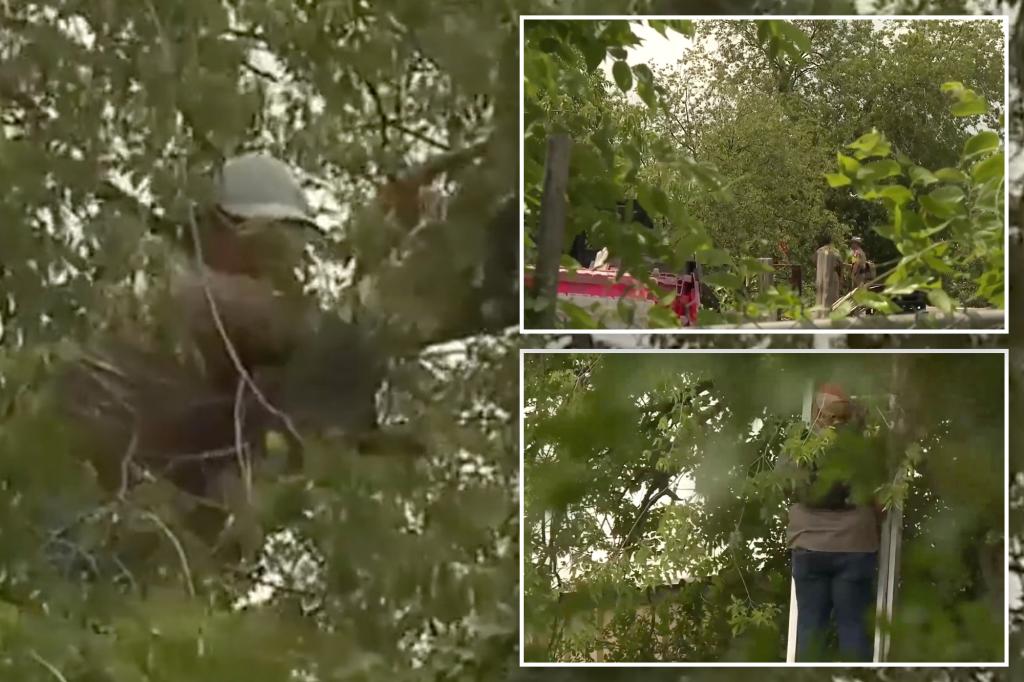Dramatic Rescue: Immigrant Found Hiding in Tree for Six Hours Evades Capture
In a tense standoff that lasted over six hours, an undocumented immigrant narrowly avoided capture by U.S. Immigration and Customs Enforcement (ICE) agents by hiding in a densely foliaged tree in suburban Texas. The incident, which occurred on Tuesday morning near the border town of Laredo, highlights the extreme measures some individuals take to evade authorities amid heightened immigration enforcement.
The High-Stakes Hideaway: How the Incident Unfolded
According to eyewitness accounts and official reports, the 32-year-old Guatemalan national scaled a 25-foot oak tree after spotting ICE agents conducting routine patrols in the neighborhood. Local resident Maria Gonzalez described the scene: “I saw this man running like his life depended on it—next thing I knew, he was climbing that tree like a squirrel escaping a dog.”
Key details of the incident:
- Location: Residential area 3 miles north of the U.S.-Mexico border
- Duration: 6 hours and 22 minutes (8:15 AM to 2:37 PM)
- Response: 4 ICE vehicles, 1 K-9 unit, and local police backup
- Outcome: Subject escaped during shift change when attention lapsed
Immigration Enforcement Challenges in Border Communities
This event underscores the growing difficulties faced by immigration authorities in border regions. Recent Department of Homeland Security statistics reveal:
- 23% increase in attempted evasions along the southern border since 2021
- Average of 47 “extreme evasion” cases monthly (including hiding in vehicles, tunnels, or elevated positions)
- 17% decrease in successful apprehensions for fiscal year 2023 compared to 2022
Dr. Elena Castillo, immigration policy expert at the University of Texas, notes: “What we’re seeing reflects desperate measures by desperate people. When individuals believe deportation means returning to life-threatening situations, they’ll take extraordinary risks—creating dangerous scenarios for all involved.”
Perspectives on Immigration Enforcement Tactics
The incident has reignited debates about border security approaches. ICE spokesperson Mark Reynolds defended the agency’s actions: “Our officers showed remarkable restraint in this situation. We prioritized public safety while attempting to enforce federal immigration laws.”
However, immigrant rights advocate Javier Morales countered: “This isn’t about law enforcement—it’s about human dignity. No one risks their life clinging to a tree for six hours unless they’re truly terrified. Our system needs more compassion and smarter solutions.”
Local business owners expressed mixed reactions:
- “We need secure borders, but this cat-and-mouse game helps no one.” – Hardware store owner
- “These people just want to work—why make them live in constant fear?” – Restaurant manager
The Human Cost of Immigration Standoffs
Beyond policy debates, mental health professionals warn about the psychological impact on both immigrants and enforcement personnel. Trauma specialist Dr. Olivia Chen explains: “Prolonged high-stress situations like this create lasting effects—PTSD symptoms in immigrants, burnout among agents, and secondary trauma for witnesses.”
Recent studies show:
- 68% of detained immigrants report clinically significant anxiety levels
- 42% of border patrol agents meet criteria for job-related stress disorders
- Local communities near enforcement zones show 31% higher depression rates
What Comes Next: Policy Implications and Community Impact
As authorities continue searching for the individual, the incident raises broader questions about immigration policy effectiveness. Homeland Security analysts suggest this case may prompt:
- Revised ICE pursuit protocols for urban areas
- Increased community outreach to address immigrant fears
- New congressional debates about asylum process reforms
Meanwhile, the Laredo neighborhood remains shaken. “We just want to feel safe,” shares longtime resident Carlos Mendez. “Not just from crime, but from these traumatic situations that keep happening in our backyards.”
For those seeking to understand or engage with immigration issues, consider contacting your congressional representatives or volunteering with reputable immigrant assistance organizations. As this case demonstrates, real solutions require moving beyond dramatic standoffs to address root causes and humane policies.
See more Update My News



